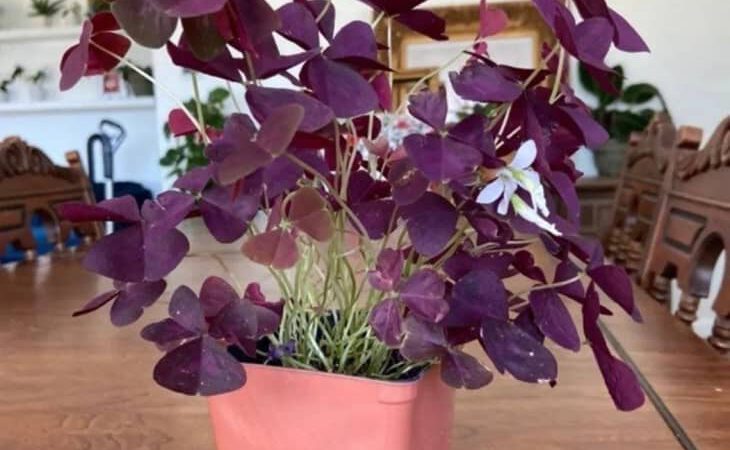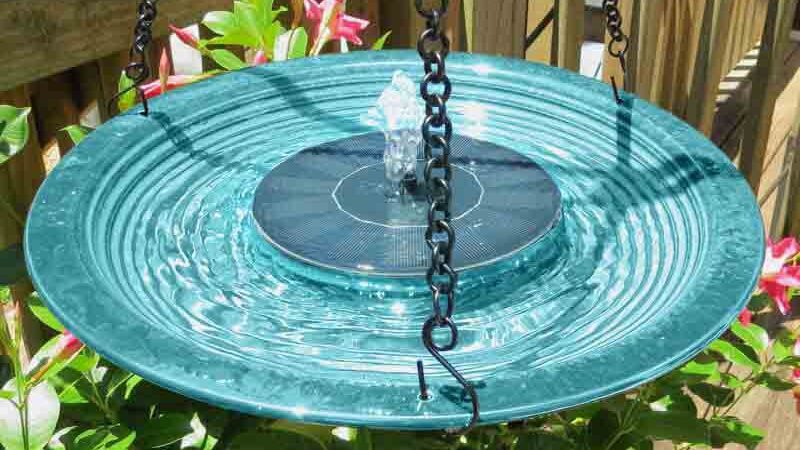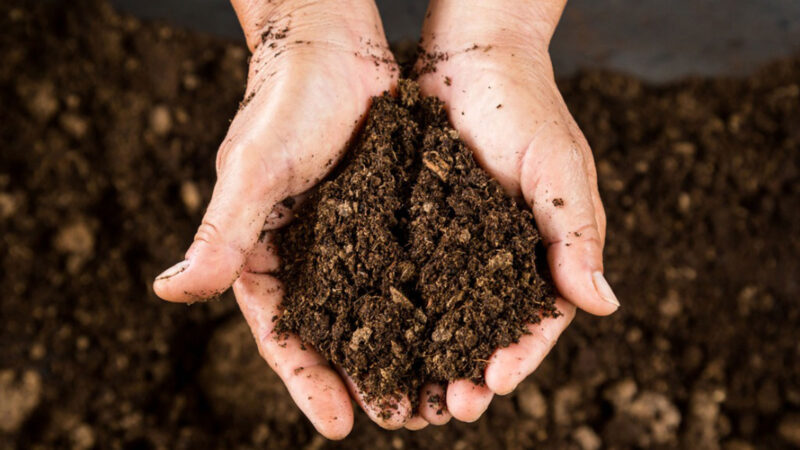How To Grow Horseradish
Horseradish is a hardy perennial plant that can be grown in many areas. It’s also very easy to grow, so everyone should have it in their garden. This plant does require some special care and attention. If you want to add horseradish to your garden, you must learn how to take good care of it.
We’ll cover how to grow, harvest, store and use your own fresh homemade horseradish sauce.
How to Plant Horseradish
The roots need a long growing season to produce large roots. Plant horseradish in full sun, although it will also tolerate partial shade. Grow horseradish in well-drained soil and ensure you remove stones and lumps that might cause the roots to split. To plant horseradish sets, dig a hole about 1 foot deep with plenty of compost mixed in. Drop one set into the hole and backfill with your potting mixture.
Horseradish grows in cool weather, so for the best flavor, plant it after the last anticipated frost date for your area. Set the crowns at the soil for spacing and planting, then plant horseradish roots in a shallow hole or trench at least 12 inches apart. Slice the horseradish root cuttings at a 30-degree angle, then fill the trench until the wide end of the horseradish root is covered.
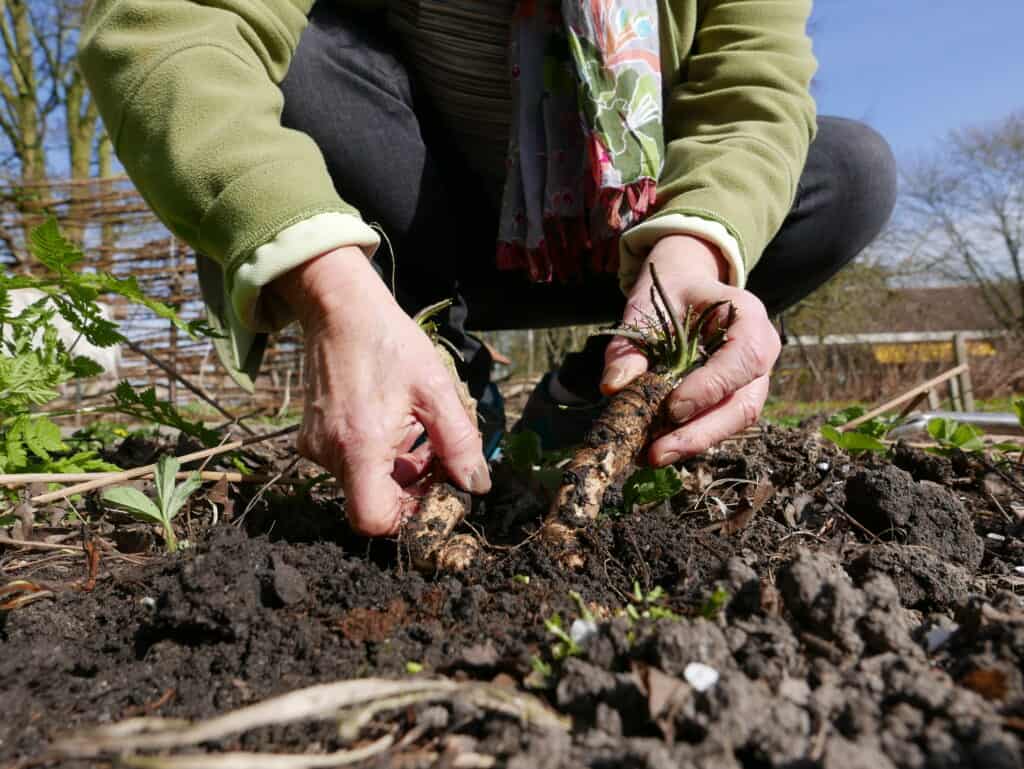
Image credit: https://cdn.harvesttotable.com/You should space horseradish roots 24 to 36 inches apart. Other plants such as potatoes and yams are the companion plants you should plant with horseradish. Make sure you choose a container that will allow horseradish roots to grow at least 24 to 30 inches deep.
Horseradish Care
Light
Horseradish plants tolerate full fun and partial shade. However, too much shade or more heat won’t be good. They should receive at least six hours of direct sunlight a day. Locate the beds with exposure to full sun, moist but well-drained soil, and protection from strong winds.
Water Horseradish Care
Horseradish requires consistent watering, moist soil, and cool weather. However, don’t overwater it, or you can get moldy or woody roots with weak flavor. You should water the plant daily with about 1 inch of water to keep the soil moist, not wet. Weed growth can hinder light penetration in summer, so weed out excess growth as hot weather approaches.
Soil Care for Horseradish
To get the most out of your horseradish crop, it’s very important that you select a planting site with rich soil. Horseradish grows well in most types of soil but prefers a moist, loamy texture. After you’ve plowed up the area for cultivation, add a generous amount of manure or organic compost to enrich the soil. Also, make sure you test the soil pH and ensure it’s neutral because horseradish thrives in slightly alkaline conditions.
Temperature and Humidity
Horseradish thrives in cool weather. Horseradish grows well in temperatures ranging from 45-75 degrees and requires a humidity level of at least 70%. But humidity won’t be an issue if its soil moisture needs are met and good airflow around the plant.
Fertilizer
Fertilize your horseradish during planting time and after every four weeks. You can make compost to use for this, use compost tea, or a commercial 10-10-10 vegetable fertilizer and ensure you follow the product’s instructions.
Pruning Your Horseradish
Horseradish won’t need pruning if you grow it as a food crop. But if you plan to use the root for medicinal purposes, cut back the top of the plant after harvesting in April or May, depending on your climate zone. The greenery will rejuvenate after this type of pruning and continue its life cycle.
Protecting Your Horseradish from Pests and Diseases
Keep your horseradish healthy by keeping it weed-free and applying mulch over the soil after planting. Horseradish has few pest or disease problems, but if you see insects eating the plant’s leaves, be sure to treat them immediately because this could spread to nearby plants.
Propagating Horseradish
The most common way of propagating horseradish plants is by saving root cuttings. This isn’t only an inexpensive way of creating new plants, but it will allow you to use excess roots you don’t eat.

Image credit: https://www.gardeningknowhow.com/
How to Harvest Horseradish
When it comes to horseradish harvest, these plants take one year to mature. In warmer climates, it may take a little longer, but most gardeners start harvesting their roots in the fall of the first year. Be sure to harvest them before they go to seed.
If you plant them in the early spring, wait until the following early spring to harvest them. They’ll take roughly 140 days to harvest. They’ll develop well during the late summer months. Avoid harvesting horseradish until late fall or early winter, even if the harvesting time has passed.
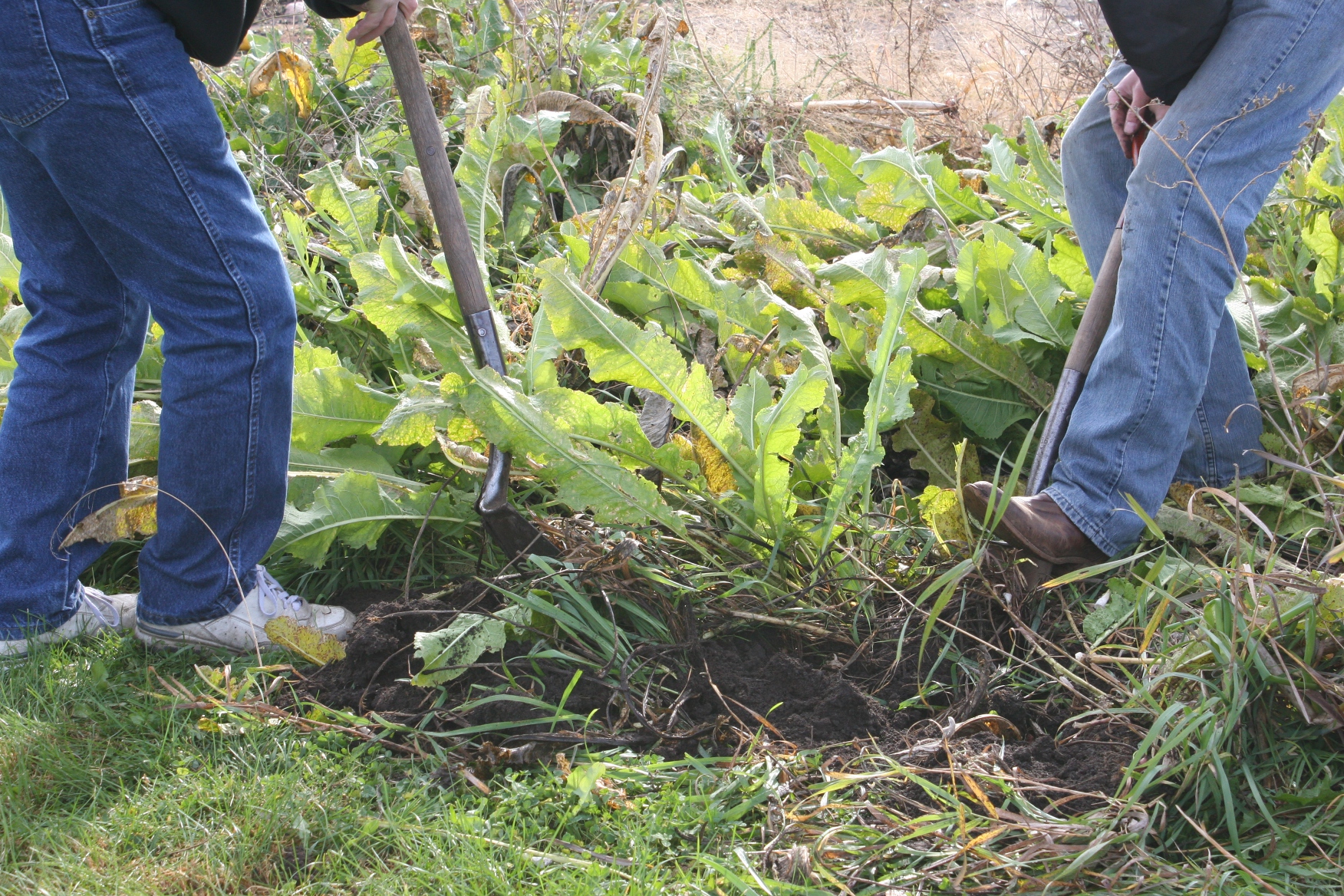
Image credit: https://mnprairieroots.files.wordpress.com/When harvesting horseradish, loosen the soil around it. You can use a garden shovel or a garden fork to carefully dig up the horseradish roots. It’s important to harvest horseradish before the first frost of winter
How to Store Horse Radish
Once harvested, store horseradish in an airtight container. Make sure you clean the roots under running water and scrub any dirt before storing them. Allow the roots to dry before you store them. Store horseradish in damp sand in the root cellar in a dark area. If you want to use it immediately, keep a small supply of roots in a perforated plastic bag in the refrigerator for a couple of months.
Recommended Varieties
The common horseradish Armoracia rusticana is not the only variety available. There are also some varieties, including common horseradish and bohemian horseradish. A common horseradish has broad, crinkled leaves with superior root quality but is more susceptible to disease.
On the other hand, bohemian horseradish has narrower, smoother leaves and is more disease-resistant. It has a slightly lower root quality. Plus, there’s wasabi, also known as Japanese horseradish. Wasabi and horseradish come from one family. They both have juicy flavors, even though they’re distinct. Wasabi leaves are also not long like horseradish leaves.
Preparing Horseradish
Freshly grated horseradish emits fumes that irritate eyes and noses. Wash horseradish roots, but do not scrub or peel them since the skin helps prevent enzymes in the root from turning to mush when grated. Rinse off any dirt after washing with cold water. Peel three to four sections of the root, then cut into half-inch chunks and drop them in your blender or food processor. Add a quarter cup of cold water and a bit of crushed ice and grind to a fine texture.
Making Horseradish Sauce
Mix your grated horseradish sauce with white vinegar or lemon juice, salt, sugar, and crushed ice to get a thick paste that won’t separate when you put it on your food. For mild horseradish, add the vinegar immediately after grinding.
Cooking with Horseradish
Horseradish is known as a classic accompaniment to hot and cold roast beef. However, there are still other ways to use the inimitable flavor of homemade horseradish. You can blend it with yogurt and sour cream to make a raw sauce that pairs well with seafood, such as shrimp and oysters.
You can also mix your horseradish with sugar and lemon juice for a sweet and sour sauce to accompany boiled or fried fish. Horseradish also makes an excellent marinade for beef before cooking. When you make roast beef sandwiches using horseradish, spread it on both pieces of the bread. When using it in hot dishes, add it before serving because cooking will destroy its flavors.
FAQS on How to Grow Horseradish
Can you plant horseradish from the grocery store?
Gardeners used to grow horseradish from plants and root cuttings in the spring or fall. Finding seeds is very difficult, but you’ll find roots at farmer’s markets, supermarkets, and retail and mail-order stores.
re horseradish leaves edible?
Yes, the leaves can be eaten raw or cooked, although they can be poisonous in rare circumstances.
Final Thought on How to Grow Horseradish
As you can see, horseradish is packed with a lot of benefits. It’s also easy to grow, although harvesting is difficult to work. The first step should be familiarizing yourself with what this plant looks like so you know when to harvest it.
The post How To Grow Horseradish appeared first on Kitchen Infinity.
Did you miss our previous article…
https://www.ilovethelovekitchen.com/?p=556

